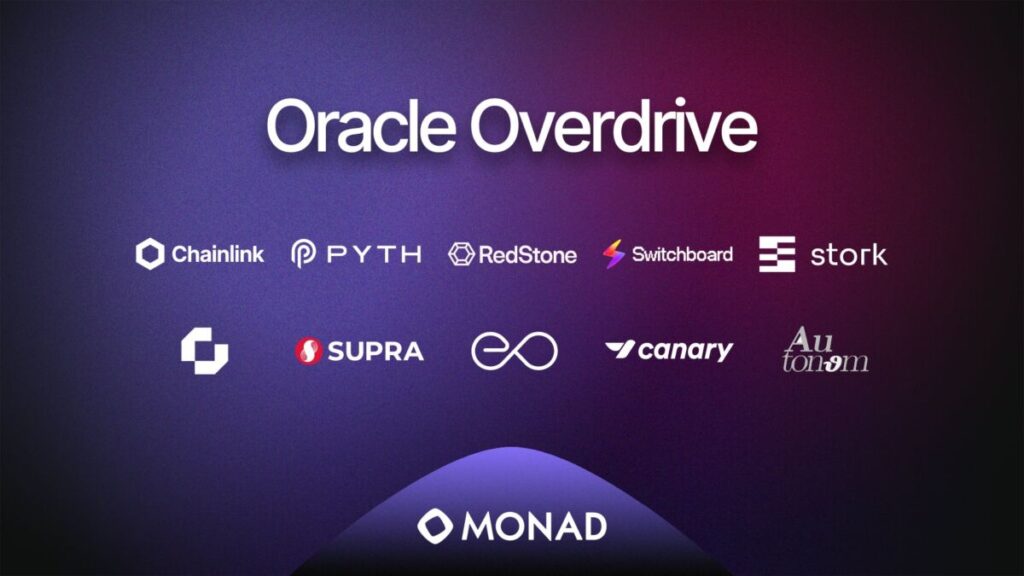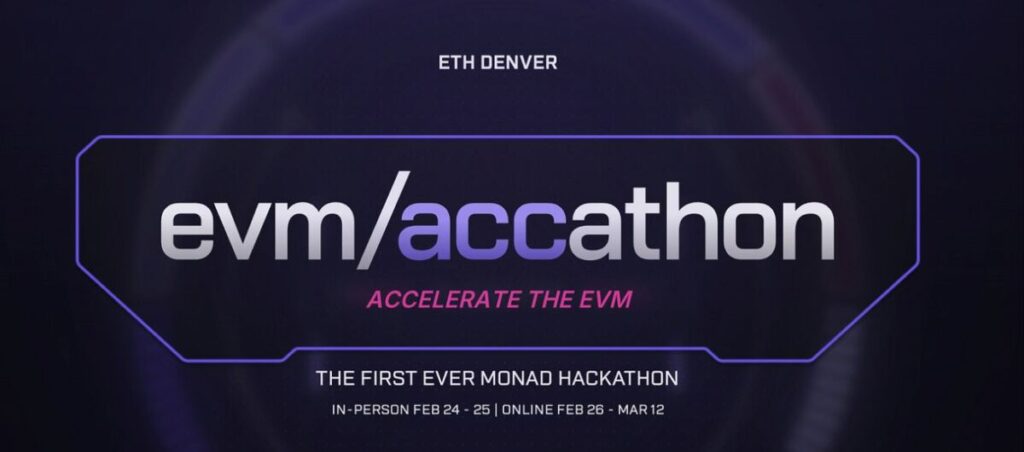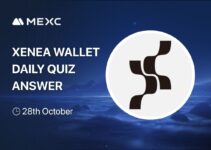- Monad transforms the EVM ecosystem with high-performance parallel execution, sub-second finality, and massive throughput—offering Solana-level speed while staying fully Ethereum compatible.
- Designed from scratch for scalability, Monad delivers 10,000 TPS, ultra-low gas fees, and effortless EVM deployment, powering next-gen DeFi, gaming, and on-chain applications.
- With MonadBFT consensus, speculative parallel execution, and a JIT-enhanced EVM, Monad emerges as the fastest and most developer-friendly Layer-1 blockchain for Web3 growth.
WHY THE MONAD CRYPTO PROJECT IS SEEN AS A NEXT-GEN HIGH-PERFORMANCE EVM CHAIN
In the race to build blockchain infrastructure, Monad stands out not just because it promises “high TPS” and “low gas.” Many projects say the same. What makes Monad different is its attempt to rebuild a Layer 1 chain from the ground up, with two clear goals at once: very high performance and full EVM compatibility.
Ethereum has lived for years with a painful trade-off. The base layer is secure and decentralized, but it is slow and expensive. To fix this, the industry pushed hard for Layer 2 solutions. Rollups, sidechains and bridges reduce costs and increase throughput, but they also increase complexity. Liquidity is split across many networks. Smart contract composability becomes weaker. Users jump between chains and bridges and often have poor experience.

(Source:Monad)
Monad starts from a different assumption. It does not accept that “more layers” must be the only way forward. Instead, the team argues that Layer 1 itself should be faster and more efficient. If the base chain can process a huge number of transactions at low cost, many of the multi-layer problems simply disappear. In that sense, Monad is not trying to be “a better L2.” It is trying to be a Layer 1 that can handle the load people expect from the whole ecosystem.
The result is a clear positioning: Monad wants to match or exceed Solana-level performance while keeping full Ethereum compatibility. It wants to keep decentralization while still reaching thousands of transactions per second and sub-second finality. That is an ambitious target. It is also why many people see Monad as one of the few new L1s that are worth serious attention.
MONAD PUBLIC CHAIN ARCHITECTURE: THE CORE OF ITS HIGH-PERFORMANCE EVM DESIGN
Monad’s technical design shows a strong engineering mindset. It does not only tweak a few parameters, like block time or gas limit. Instead, it rebuilds the way a chain handles consensus, execution, the virtual machine and state storage. The goal is to make a blockchain behave more like a modern multi-core CPU than a single-threaded interpreter.
At the consensus layer, Monad uses MonadBFT, an improved version of HotStuff-style BFT protocols. It allows blocks to be produced every 0.4 seconds and to reach finality in two blocks. For users, this means most transactions can be treated as final in around 0.8 seconds. For developers, that time scale opens new design space: real-time trading, fast in-game actions, on-chain order matching and more.
MonadBFT also aims to keep decentralization. Many BFT systems slow down when the number of validators grows, because communication overhead explodes. MonadBFT uses a linear communication pattern and careful leader rotation so that the network can still support roughly 150–200 validators. The design tries to balance security, decentralization and speed, rather than cutting validator numbers to gain performance.

(Source:x )
The execution layer is where Monad pushes hardest. Traditional EVM chains execute transactions one by one, in a strict serial order. This is simple but slow. Monad instead uses optimistic parallel execution. It assumes that most transactions do not touch the same piece of state. Many transactions are executed in parallel by multiple threads. While doing this, the system records which state slots each transaction reads and writes.
Before finalizing a block, Monad checks for conflicts in the original transaction order. If a later transaction depends on state changed by an earlier one, and the optimistic result would be wrong, that transaction is rolled back and re-executed in a serial way. In practice, real blockchain traffic is often spread out across many contracts and accounts. That means most transactions do not collide and can stay in the parallel path. Monad claims that in ideal conditions about 70–80% of transactions can be processed this way, which is a huge boost over strict serial execution.
Monad also decouples consensus and execution. In many older designs, a chain must wait for one block to be fully executed before it can safely move on. Monad breaks that link. Consensus is responsible for deciding the order of blocks and transactions. Execution can then work in a looser pipeline, and can even speculatively execute blocks that are very likely to be finalized. If a proposed block is later dropped, its execution results are simply thrown away. This pipeline model removes a hidden bottleneck and allows the chain to “keep moving” even while heavy blocks are still computing.
At the virtual machine and storage level, Monad adds more optimization. The EVM implementation supports JIT (just-in-time) compilation. Contracts that are called very frequently can be compiled to native x86-64 machine code in the background. This is especially useful for core DeFi contracts, DEXs and lending logic that run all the time.
MonadDB, the custom state database, tightens the link between the Merkle structure and the underlying storage engine. It reduces unnecessary I/O and supports multi-threaded reads. This fits well with the parallel execution model. Together, these choices help Monad keep high throughput not just in theory, but in real-world workloads where state reads and writes are often the biggest limiting factor.
MONAD VS OTHER PUBLIC CHAINS: WHAT HIGH TPS AND LOW GAS REALLY MEAN
Monad’s target numbers are bold: around 10,000 transactions per second, about 0.8 second finality, and gas fees below one cent. As an EVM-compatible chain, this places it at the extreme high end of the performance spectrum. But raw numbers alone do not tell the whole story. We need to ask what these figures actually change in practice.
Ethereum’s base layer, with fewer than 15 TPS, clearly cannot host high-frequency trading, large-scale gaming or heavy social activity without constant congestion. Even moderate demand often drives fees to painful levels and crowds out less urgent use cases. Other EVM chains may reach dozens or a few hundred TPS, but they still face tight capacity when multiple big protocols compete for the same block space.
Monad’s 10,000 TPS target is not about winning a benchmark contest. It is about pushing the “capacity ceiling” far enough that many big applications can coexist on one chain. If one game, one DEX or one NFT mint no longer threatens to freeze the entire network, developers can design without fear that success will break their own infrastructure.
The 0.8 second finality has a similar effect. On Ethereum, users are used to waiting several minutes before feeling sure their transaction will not be reversed. That is fine for some actions, but it feels slow in trading and gaming. On Monad, finality is close to real-time. Users can act, see the result and move on almost instantly. That psychological shift matters. It makes blockchain interactions feel much closer to Web2 services.
Low fees are more than just “cheaper transactions.” When average fees drop below a cent, developers can reasonably push far more logic on-chain. On Ethereum, many teams try to minimize on-chain writes to keep costs under control. On Monad, they can update game state every action, track fine-grained in-app activity or rebalance positions frequently for small portfolios, without the gas bill destroying the user experience.
Of course, high performance is never free. Several chains that chased high TPS in the past ended up with centralization, downtime or serious instability. Monad’s architecture tries to answer that by using more intelligent software design rather than simply reducing validators or demanding extreme hardware. Whether this approach will remain stable under mainnet conditions is an open question. The design is promising, but real-world tests over time will be the final proof.
MONAD’S EVM COMPATIBILITY: AN ECOSYSTEM STRATEGY WITH NEAR-ZERO MIGRATION COST
Performance is the headline feature, but full EVM compatibility may be Monad’s sharpest strategic tool. Over the last ten years, Ethereum has built an enormous ecosystem: Solidity as the main language, rich tooling like Hardhat and Foundry, wallet infrastructure such as MetaMask, plus auditors, standards and best practices. This is not something a new chain can easily replace.
Monad chooses to embrace this history instead of fighting it. The chain is compatible with Ethereum at the bytecode level. That means contracts written for Ethereum can be deployed to Monad without any changes. It also means that gas rules and core semantics match what developers already know. JSON-RPC is aligned with Geth, so most tools and services can plug in with little effort.

(Source:Monad)
For teams that already live in the Ethereum world, this matters a lot. Moving to Solana or a Move-based chain requires learning a new programming model, toolchain and ecosystem culture. Moving to Monad can be as simple as adding another network to the deployment script. The reward for doing so is much higher throughput and much lower fees.
Monad also takes care to ensure that, despite its parallel and speculative execution engine, final results match the behavior of a serial EVM. Conflicts are detected and re-executed where needed. Developers do not have to think about parallelism themselves. From their point of view, the chain behaves like a very fast, very cheap EVM chain that “just works.”
This is a strong position. It allows Monad to present itself as “the high-performance EVM you already know how to build on.” That narrative is easier to sell than “learn our new language and paradigm from scratch.”
MONAD ECOSYSTEM GROWTH AND DEVELOPERS: THE REAL GROUND FOR MON TOKEN UTILITY
A blockchain’s long-term value is not determined by its whitepaper, but by whether people actually build and use things on it. Before Monad mainnet is even live, its public and private testnets have already attracted over two hundred projects. They span DeFi, NFT markets, gaming, infrastructure, data services and more.
Some of these are Ethereum-native projects that are testing Monad as a secondary deployment target. For them, the attraction is simple: they can keep running on Ethereum for deep liquidity and network effects, while using Monad for low-latency, high-frequency features. Others are new projects that want to design “for high performance from day one.” They see Monad as the right environment for order-book DEXs, intense on-chain games or complex derivatives protocols that would be too costly elsewhere.
On top of this organic interest, the Monad Foundation and partners have built structured support programs: hackathons with meaningful prize pools, an accelerator focused on high-performance use cases, grants for core tools and infrastructure, and in-person events to connect founders with investors and mentors. This mix of technical depth and community-building gives Monad a real chance to create a dense ecosystem rather than a shallow list of one-off deployments.
For the MON token, this matters because token utility grows with real usage. Gas paid in MON, staking demand, governance participation and incentive programs all depend on whether the chain is alive with activity or not. A rich ecosystem with active developers and users is the real foundation of any L1 token’s value.
THE ROLE OF THE MON TOKEN: FROM SYSTEM FUEL TO ECONOMIC FOUNDATION
MON is the native token of the Monad network. On a basic level, it plays the same roles as other L1 tokens: it is used to pay gas fees, it is staked by validators and delegators to secure the network, and it serves as the main asset for governance and on-chain proposals. It is also the currency for many ecosystem rewards and incentive schemes.
But these functions by themselves do not make MON special. Nearly every L1 token can claim a similar list. The deeper question is whether there will be steady, organic demand for the token over time. That depends on how much real activity Monad can attract and retain. If high performance and low fees lead to a vibrant base of DeFi, games and new types of applications, then MON becomes the fuel for that economic system. Its use for gas and staking then reflects real demand, not just speculative interest.

(Source:Mexc)
For everyday users, exposure to MON will often begin through centralized exchanges such as MEXC once the token is listed there. For more technical participants, running a validator, joining staking pools or providing infrastructure services are more active ways to hold and use MON.
Token distribution, lockups and incentive design will also matter. Large early funding rounds mean that a significant share of MON is in the hands of investors and the team. How vesting is structured, how much is set aside for community and developers, and how the foundation manages emissions will have a big impact on price behavior and community trust. Done well, these mechanisms can support long-term growth. Done poorly, they can create constant sell pressure and damage the project’s reputation.
MONAD’S LONG-TERM POTENTIAL: FINDING A PLACE IN A CROWDED L1 LANDSCAPE
In the wider context of Layer 1 competition, Monad is entering a field that is already busy. Solana continues to push on performance and ecosystem depth. Move-based chains like Aptos and Sui explore new programming models. Ethereum and its Rollups invest in a layered, modular future where many L2s share a common base. New designs for shared sequencing and modular data availability are changing how we even define “a chain.”
Against this backdrop, Monad’s approach is quite clear: it is a bet that a single, powerful, EVM-compatible L1 can still matter a lot, if it is built well enough. It tries to solve hard problems at the base layer with smarter software instead of pushing everything upward. It aims to let developers keep their existing tooling while giving them far greater performance headroom.
Its opportunity is obvious. If Monad can show that its design works at scale on mainnet, stays stable under stress, and can attract a critical mass of meaningful applications, then it could become the default choice for teams that want EVM simplicity with Solana-style speed. In that world, MON would not be just another L1 token. It would be the main asset of a chain that powers a large part of the high-frequency on-chain economy.
Its risks are also clear. High-performance chains are hard to run and easy to break. Outages, security incidents, poor governance or misaligned incentives can quickly erode trust. The L1 space is unforgiving: users and developers have many alternatives and little patience for repeated failures.
Still, Monad has some important ingredients in its favor: a technically strong team with real experience in low-latency systems, serious funding from top-tier investors, a thoughtful architecture and early signs of developer interest. Mainnet will be the real exam. Over the next few years, we will see whether the idea of a “high-performance EVM L1” is a narrative or a genuine new category.
For people who care about the future of blockchain infrastructure, watching Monad is not only about tracking a potential investment in MON. It is also about seeing whether this approach to scaling—fast, EVM-based, but still decentralized—can hold up in the real world and possibly reshape what we expect from a base layer chain.
Monad FAQ
1. What is Monad and why is it considered a next-generation EVM Layer 1?
Monad is a high-performance Layer-1 blockchain designed to deliver Solana-level speed while preserving full Ethereum EVM compatibility. Its architecture features parallel execution, MonadBFT consensus, and JIT-optimized EVM performance.
2. How fast is Monad compared to Ethereum and other EVM chains?
Monad targets 10,000+ TPS and around 0.8-second finality, far exceeding Ethereum’s ~15 TPS and outperforming most EVM-compatible blockchains.
3. What makes Monad’s parallel execution unique?
Monad uses optimistic parallel execution, allowing most transactions to run in parallel while resolving conflicts safely. This boosts real-world throughput without breaking EVM semantics.
4. Is Monad fully EVM compatible?
Yes. Monad supports Ethereum bytecode, Solidity contracts, and standard tooling (Hardhat, Foundry, MetaMask). Developers can deploy existing smart contracts with zero changes.
5. How does Monad achieve low gas fees?
Its optimized execution engine, high throughput, and custom MonadDB significantly reduce computation and storage overhead, enabling sub-cent gas fees even under heavy load.
6. What is MON token used for?
The MON token powers the ecosystem through:
- Gas fees
- Staking and validator security
- Governance
- Incentives for developers and users
7. Is Monad more decentralized than other high-performance chains?
MonadBFT supports ~150–200 validators with linear communication, maintaining decentralization while delivering fast finality—unlike chains that trade decentralization for speed.
Read More:
Join MEXC and Get up to $10,000 Bonus!
Sign Up


